“Global marketing is for big companies.”
If this is what you believe, think again.
The internet has made the world a lot smaller and has enabled businesses of all sizes to think globally — from a small ecommerce store expanding internationally and growing revenues by 232% to huge, public companies like Netflix expanding to over 190 countries and generating 97 million international subscribers.[*][*]
Global marketing strategy is now something for almost every business to consider. But where should you start?
Read below to find out.
%(tableofcontents)
What Is A Global Marketing Strategy?
A global marketing strategy is part of an overall strategy to help your business expand into new markets across the world.
When expanding your business globally, some aspects likely won’t change, such as your name and logo — though sometimes brands do use different names in various territories.
Whereas your approach to marketing — the messaging, creative, PR, advertising, and channels — will change for each market you move into.
For example, in the U.S., you might spend significant ad dollars on Facebook. But in Japan, where Twitter is more popular than Facebook, you might focus on how you can use Twitter to connect with consumers.[*]
Why Global Expansion Matters
If a global marketing strategy is implemented correctly, it can have many benefits for a business. Here are a few of them:
-
New revenue opportunities. This is probably the biggest driver of global expansion. Offering your product or service in new locations opens up tons of revenue growth opportunities
-
Increased brand awareness and reputation. Expanding globally can naturally increase awareness of your brand. But it can also increase trust. It’s why you hear companies talking about ‘Available in X countries’ or ‘Shipping worldwide’ in their marketing campaigns. Ubiquity can make your brand appear bigger and more trustworthy.
-
Chance to learn and improve your products. New markets will help you to spot new opportunities to improve your product offering. For example, Uber now accepts cash payments in over 130 cities after expanding into locations where cash is still preferred to card.
How To Market Your Business Globally in 4 Steps
1. Look At Where Your Customers Come From
One of the best ways to get started with a global marketing strategy is to look at where your current customers come from.
If you use Shopify, the ‘customers by location’ report will show you a quick overview of where your customers are located and how much they’ve spent in your store:
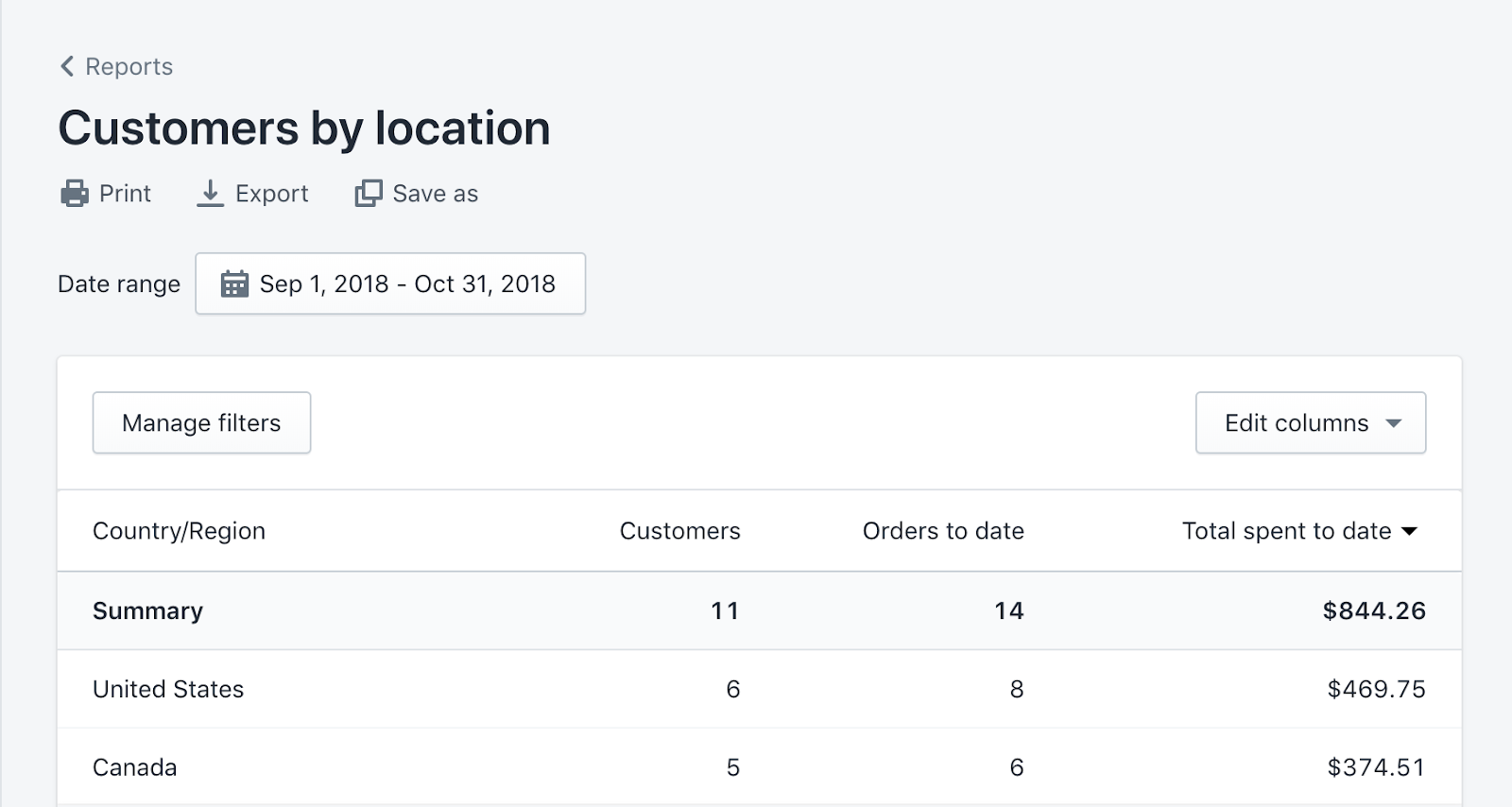
If you have Google Analytics set up for your site, you can also use its Audience features to look at where you’re getting the most traffic from:
To do this:
-
Open Google Analytics
-
Click ‘Audience’ in the right-hand navigation
-
Open the ‘Geo’ menu
-
Click ‘Location’
You’ll now see a breakdown of your visitors by location:

If you notice you’re getting a lot of traffic from a location your business doesn’t serve, or could serve better (e.g., offer local pricing and support), this could be a big opportunity.
For example, back years ago Noah Kagan (Chief Sumo), created a Facebook gaming company called Gambit.
As Gambit was a U.S. company, the team focused on growth in the U.S. (makes sense right?). When Noah looked into the data, he spotted that half of the revenue was coming from outside the U.S. — places like Finland, Portugal, and New Zealand.
So by not looking internationally for marketing opportunities, Noah and Gambit were missing out on huge revenue opportunities. By marketing to these new territories internally, they could reach new audiences filled with potential customers.
Before you get too deep into your global marketing strategy planning, look at your data to see where there might already be existing demand for your products or services.
2. Differentiate Your Offerings
If you head into McDonald’s in Italy, you might see ‘Crock Brie’ (triangles of melted brie cheese covered in breadcrumbs) on the menu, and in Canada, you may see poutine.
The point is, the McDonald’s menu varies in almost every country because McDonald's understands the importance of localization.
What sells well in one market might not sell in every country. Before you expand, try to work out:
-
How do your products translate? Check to make sure nothing is offensive or can be misunderstood in local languages.
-
Are there any government regulations you should consider? Every government has slightly different trade and marketing laws, so ensure there are no laws blocking your expansion and the ways you currently market your business (it’s also worth working out local tax implications too).
-
Do any existing trademarks affect your business? Sometimes existing businesses might have trademarks that affect your brand. For example, Burger King is called Hungry Jacks in Australia (more on that in the next section).
Sometimes differentiations might also be forced upon you if logistics are an issue. This could also be an opportunity for your business to source new, local suppliers, but this could be a good thing enabling your business to market how you’re helping the local economy and supporting local businesses.
3. Think About Branding
Often, businesses will keep their brand name the same across multiple countries. For example, Nike is called Nike across the globe, and Starbucks coffee shops are always called Starbucks.
But sometimes brands decide to use unique names for each territory they enter.
A great example of this is Rexona, an Australian deodorant brand. In the U.S., you might know Rexona as Degree, in the UK it’s called Sure, in Japan and South Korea it’s called Rexona, and it’s known as Shield in South Africa.

So why do some brands changes names in different locations? There are plenty of reasons for this but the most common include:
-
The brand name is already in use: Before Burger King expanded to Australia, the name ‘Burger King’ was already trademarked by another restaurant, so it had to rebrand.[*]
-
Adapting to local language: Brands sometimes change their name to adapt to the local language. For example, UK cleaning brand ‘Mr Muscle’ is known as ‘Mr Musculo’ in Latin America.[*]
-
Using local, recognized names: You might know “Lay’s” chips, but in the UK, “Lay’s” is called “Walkers” and in Australia the same chips are called “Smith’s.” This is because PepsiCo Inc., the owner of all these brands, acquires local businesses and keeps the original names when they expand into new markets.[*]
As you think about your global marketing plan, research your brand and how it might connect with consumers across markets. It’s also worth checking that your brand name isn’t deemed rude or inappropriate in certain languages or cultures.
4. Localize Your Messaging
Building on the brand point above, every country will respond to different messaging. This could be subtle things like how Hungry Jack’s uses emojis in all of its Facebook Ads:
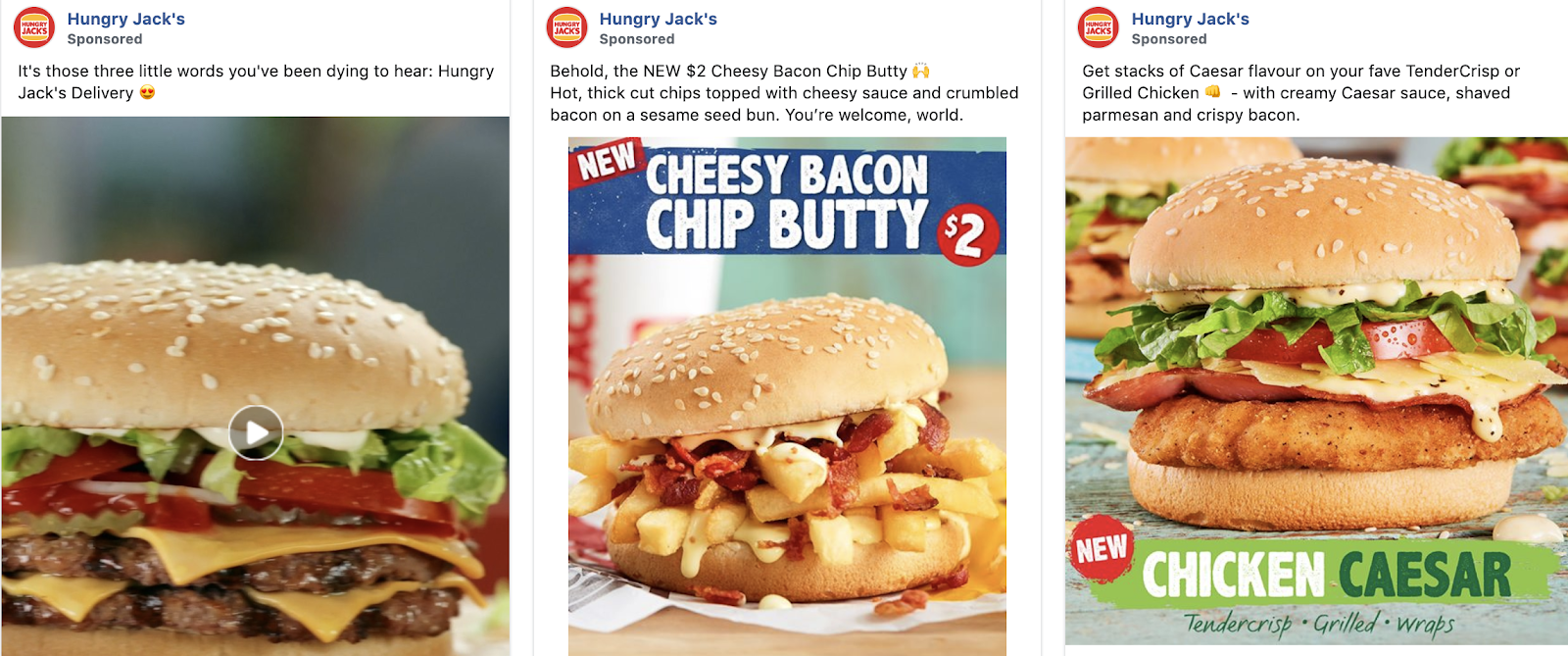
Whereas Burger King U.S. doesn’t use any emojis:
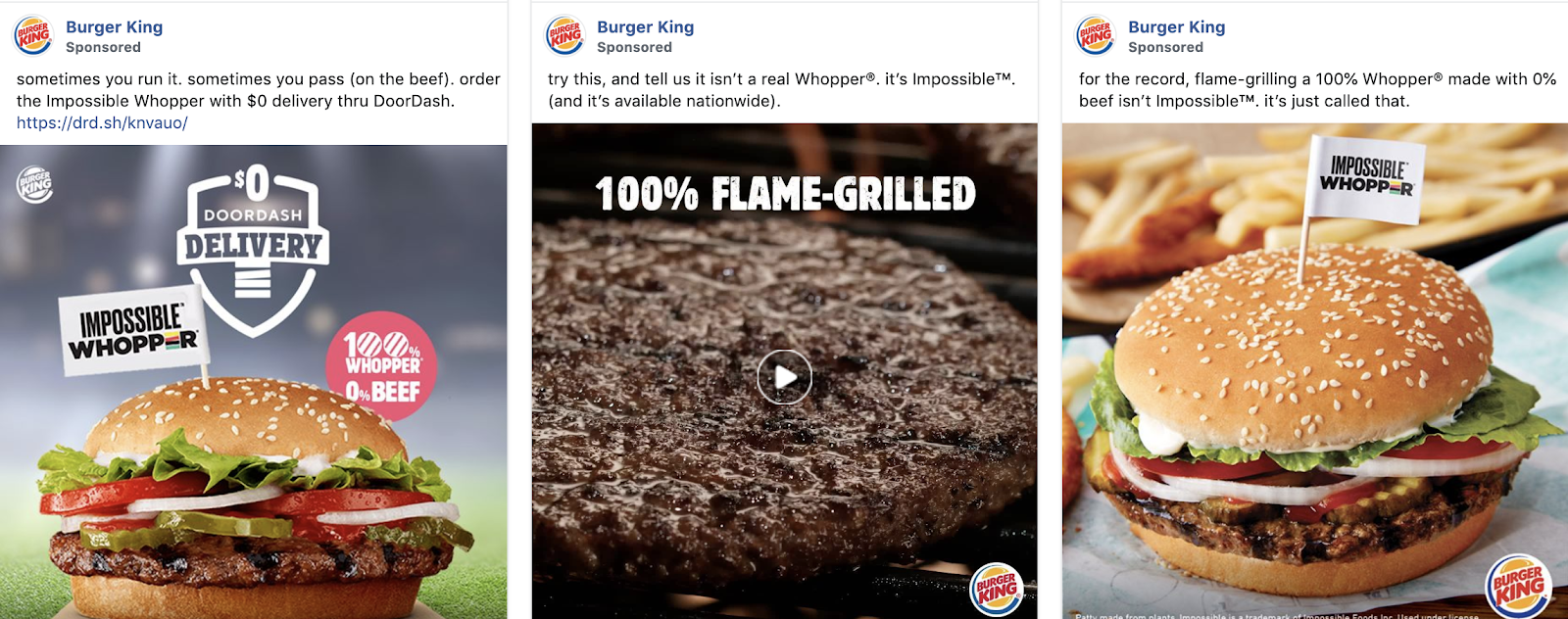
Or you could localize the pain points your copy addresses, like QuickBooks. In the U.S., QuickBooks’ homepage talks about saving time with organization and the cost of the product with its hero copy:

In the UK, QuickBooks focused on taking VAT returns digital:

It also uses localized copy to assure UK residents that QuickBooks is a great fit for them by mentioning HMRC (the UK tax, payments, and customs authority) and VAT.
When you’re expanding globally, you need to pay attention to the details in your messaging and see what resonates with each audience.
Global Marketing Strategy Examples
1. Shopify
Key takeaway: Create sites with localized language and content.
Shopify is one of the fastest-growing SaaS companies in history, and its global marketing strategy is part of the reason for its incredible growth.
For example, in France, you’ll be directed to its fully localized French website:
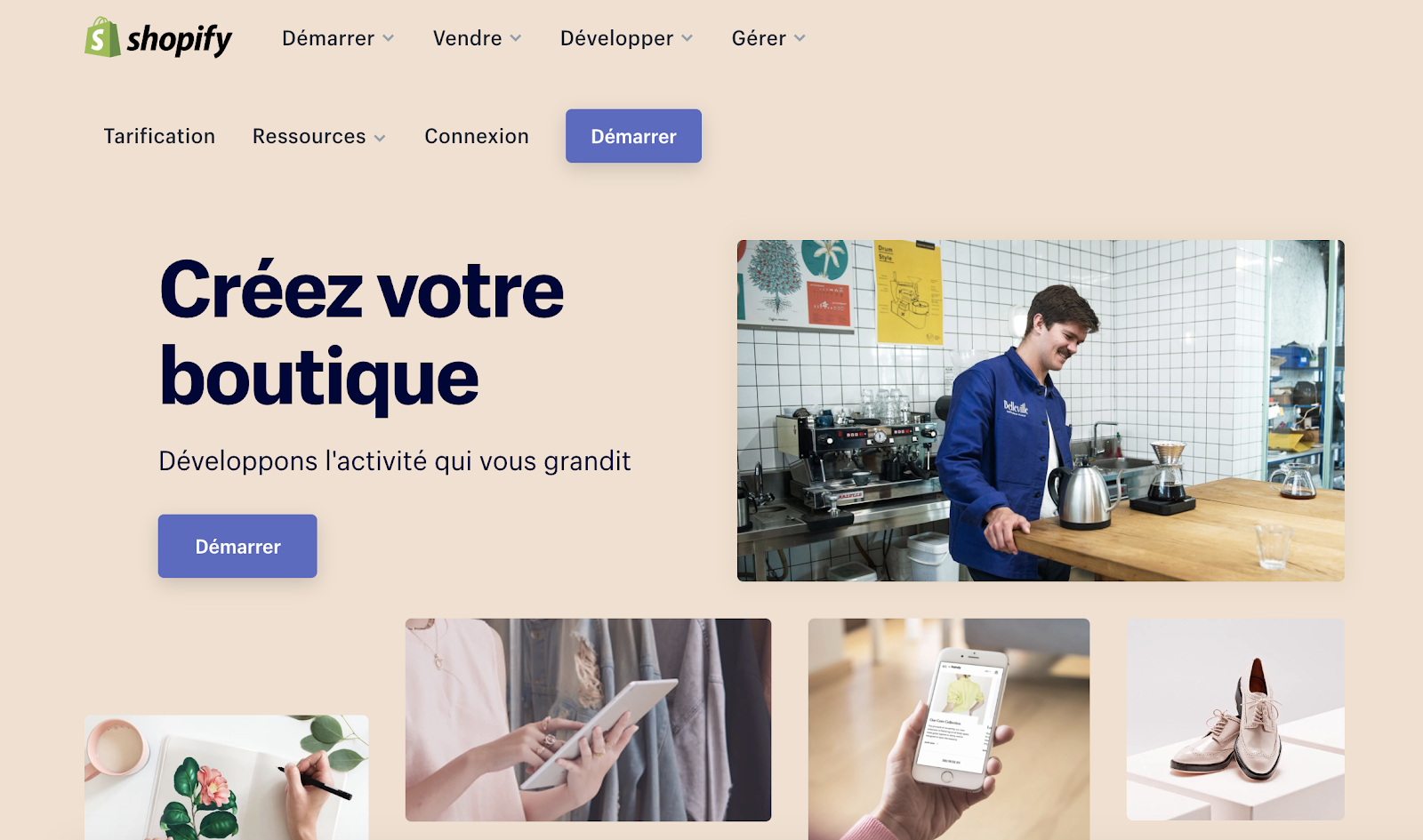
And in Germany, you’ll see a German site:

Now let’s stay on the German site a little and dig below the surface.
Shopify hasn’t just recreated its English site and left it at that; it’s reworked parts playbook to suit the German market.
For evidence of this, look no further than its German blog:
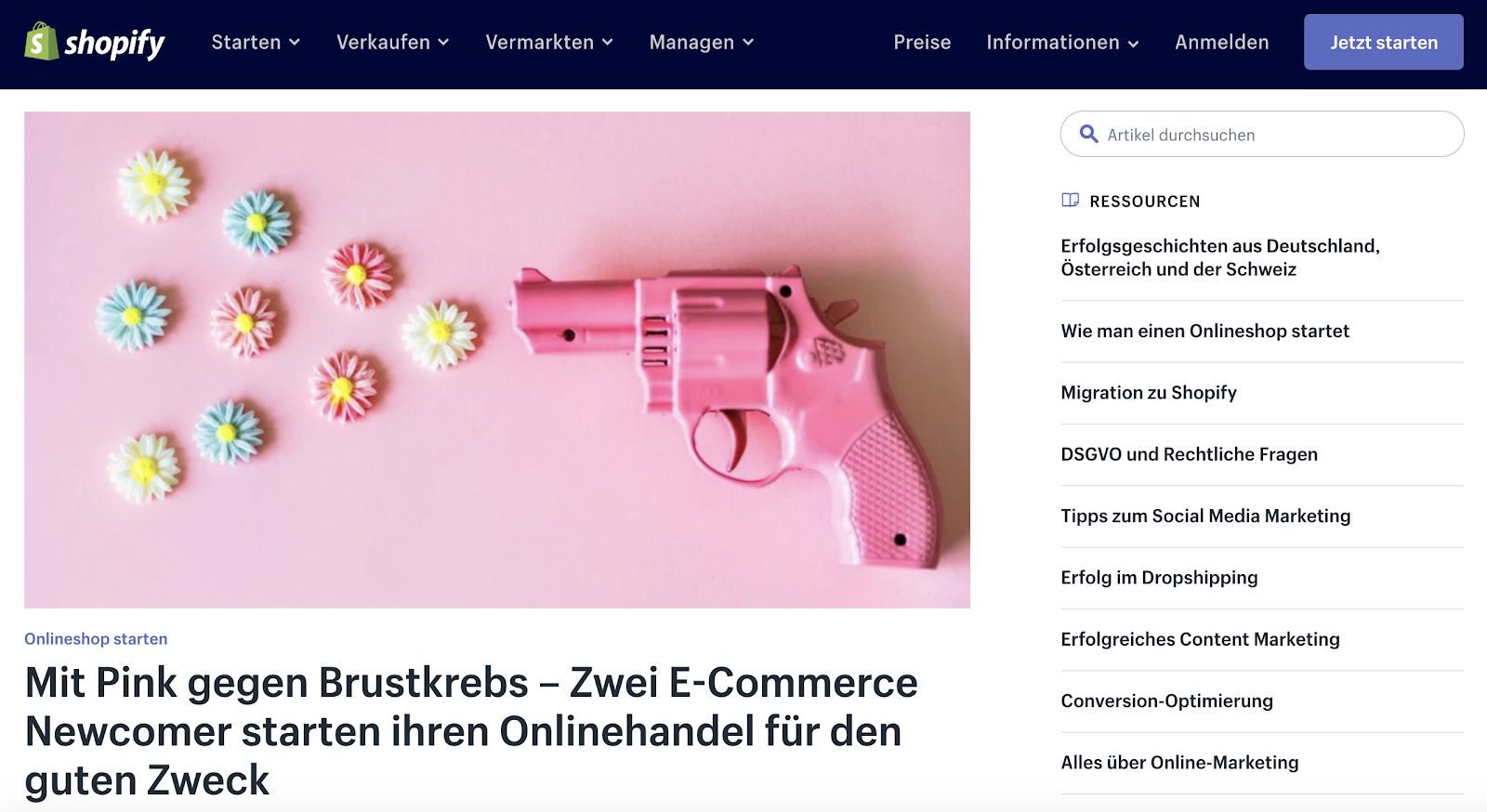
Content marketing has helped Shopify massively. By creating location-specific content, it can connect with more potential customers in their preferred language and increase its chances of being discovered via local search engines.
Ahrefs estimates that the Shopify.de domain ranks for over 10.5K keywords and generates more than 47.5K clicks from search each month. This traffic is valued at an incredible $53.5K per month.
Here’s a look at how Shopify.de’s organic traffic has increased since its launch:
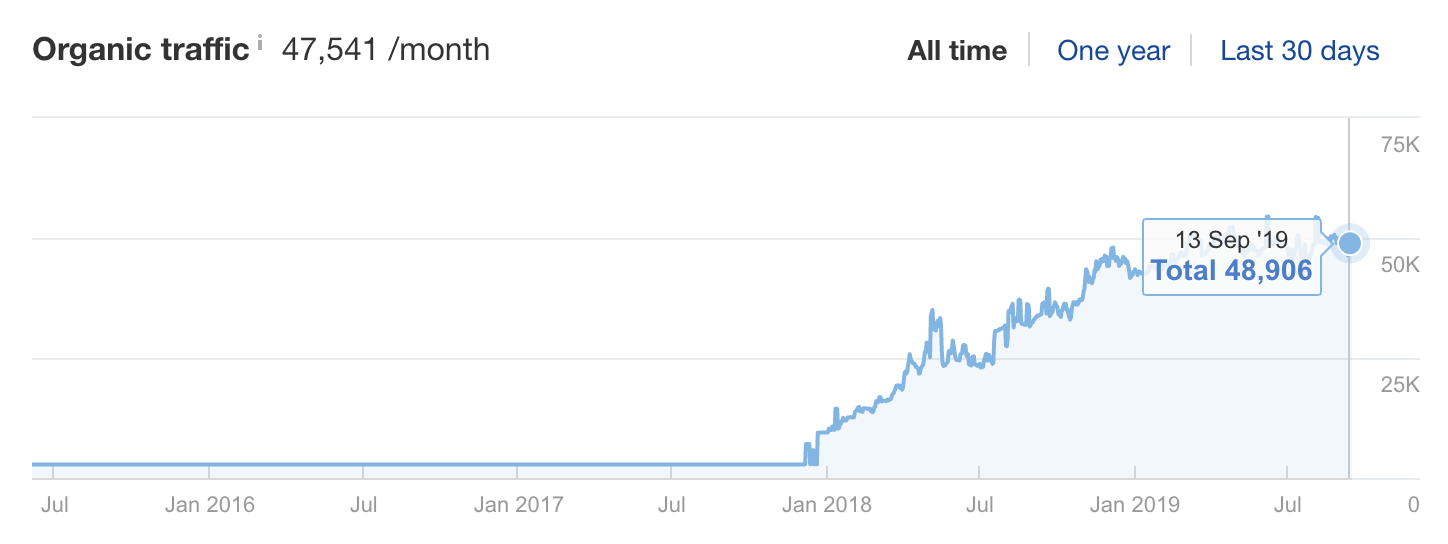
And for each new market it expands into, Shopify hires marketers to create content in local languages:

This focus on localized content, created by local marketers has enabled Shopify to capitalize on the opportunities it may have otherwise missed out on.
For example, when DaWanda, a leading European marketplace for creators (like Etsy), shut down, Shopify created content encouraging former DaWanda sellers to move to Shopify.

(Headline translated using Google Translate for clarity).
This one blog posts ranks for over 225 keywords related to DaWanda —

— and generates over 900 organic clicks per month for Shopify from a highly targeted audience of people who want to sell their products online.
2. Starbucks
Key takeaway: Localize your product messaging to connect with audiences in each country.
Over the past couple of years, a certain Starbucks drink has become synonymous with Fall.
Yep, I’m talking about the Pumpkin Spice Latte (or ‘PSL’ for short).
Introduced to consumers in 2003, the PSL has become a bit of a pop culture icon, and CNBC reports that over 424 million have been sold worldwide since its launch.[*]
But as a worldwide brand, Starbucks has learned about the importance of a solid global marketing strategy. Even when one product is available in multiple countries, the way it’s marketed shouldn’t be copied and pasted between territories.
Though Starbucks’ PSL products might be similar across all locations, the business understands that each country will have its own norms and behaviors, so the marketing needs to adapt.
For example, in the U.S. (and a few other countries), the return of the PSL was announced with this Facebook ad:

But in the UK, different creative and messaging was used to announce the return of the PSL:

In Portugal, more emphasis is put on the iced versions of the PSL rather than the hot latte:

Here Starbucks is executing its global marketing strategy to perfection. It’s promoting its hugely popular PSL product range, but offering a range of creative and messaging to help local marketers to tailor the message to their audience.
3. Uber
Key takeaway: Adapt to local customs and spending habits.
Uber started in 2009, and is now available in over 60 countries and 400 cities worldwide. That’s impressive expansion, right? It even expanded overseas before its service was available in all U.S. states.
Adapting to local needs and cultures has played a key part in Uber’s global marketing strategy.
For example, in Colombo, Sri Lanka, Uber has adapted its app and marketing to ensure users know that they can pay digitally or use cash. Here’s an email it sent to users in Sri Lanka:
Image via One Mile At A Time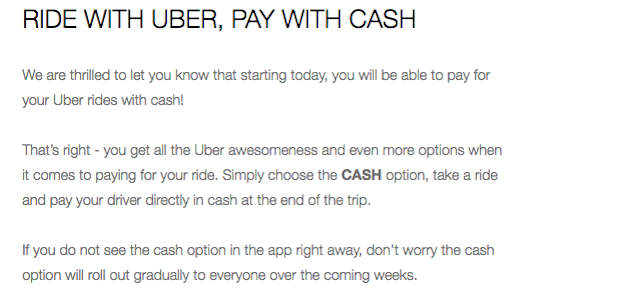
As it moves into new markets, Uber is careful to ensure it offers solutions for all cultures. In some locations, where cash is still preferred to credit or debit card payments, it has adapted its product and marketing to suit.
By offering cash payments to customers, Uber can craft marketing messages that align with the culture in each location. For example, it could run ads in Sri Lanka to promote cash payments whereas in the U.S. it might focus on the ease of using mobile payments.
Learnings from new markets can also help to improve your product in existing markets too. The cash payment option was first tested by Uber in Hyderabad, India, before expanding to Nairobi, Kenya, and Colombo, Sri Lanka.
Making product improvements can help you to come up with new marketing angles and ways to connect with your target customers. Whereas mobile payments could have been an issue for potential riders in some cities, Uber can now market cash payment options to riders in 130 cities.
4. HelloFresh
Key takeaway: Work with local influencers and produce content unique to each country.
HelloFresh is a meal kit delivery company. Its products are available in various locations, including the U.S., Canada, UK, The Netherlands, and Germany.[*]
Like many digital-first brands, Instagram has played a key role in its growth and HelloFresh operates unique Instagram accounts for each of its locations.
Here are some posts from its U.S. account:

And its UK account:

The images look the same aesthetically. But when you dig a bit deeper into HelloFresh’s international Instagram strategy, you see how it localizes its marketing.
In the UK, HelloFresh works with well-known British celebrities and influencers to help promote its brand and products. Here’s a recent piece of content with TV presenter Davina McCall:
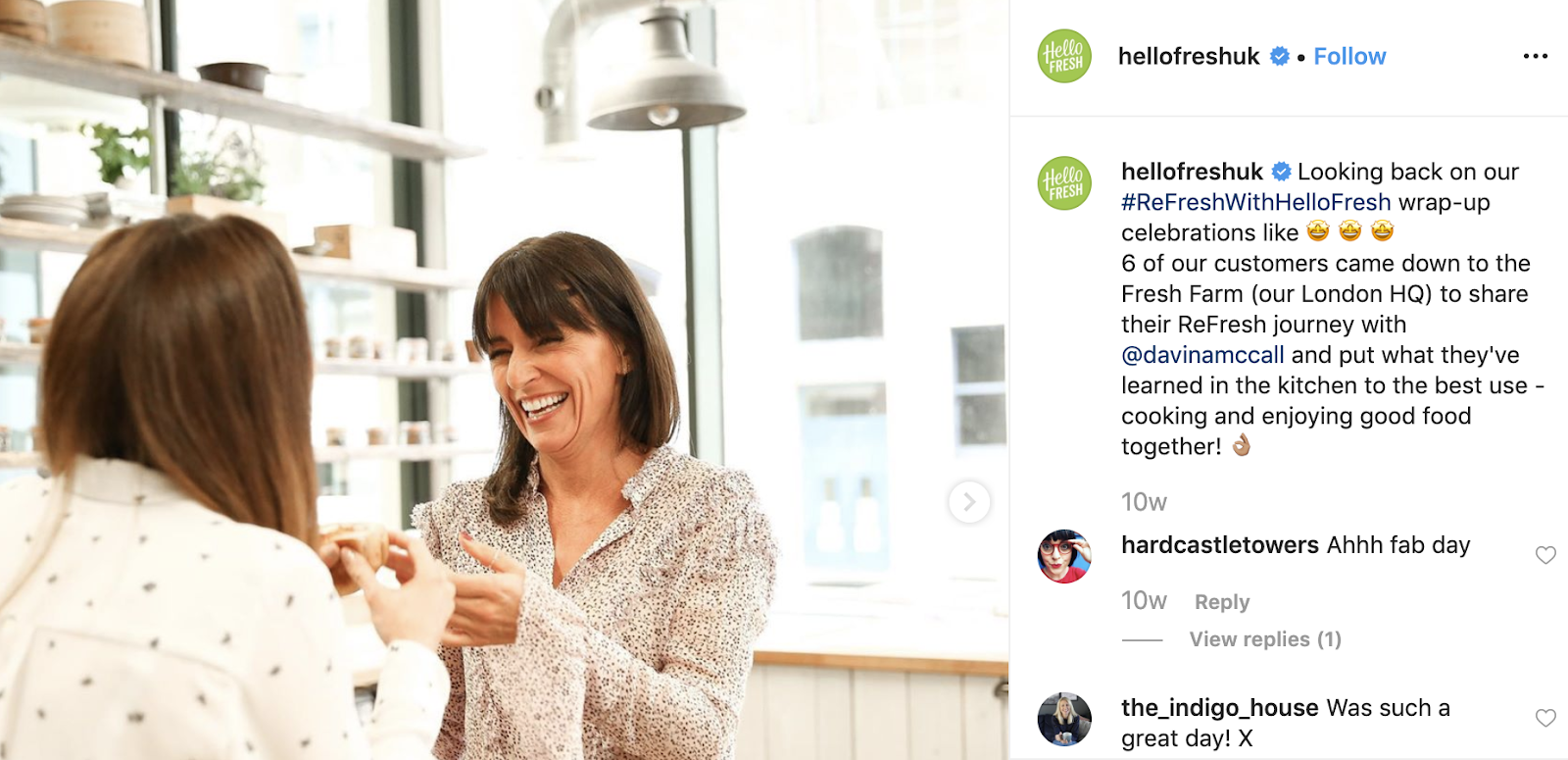
In the U.S., it works with American influencers and celebrities like Jessica Alba:

By working with local influencers in each country, HelloFresh can ensure its campaigns are super effective and drive maximum value for the brand.
5. Nike
Key takeaway: Use local marketing channels.
In the West, channels like Facebook, Twitter, and email might be the best ways to connect with your customers.
But as you expand globally, you might want to explore channels that are popular in each area you move into.
For example, in China, Weibo is one of the dominant players in the social media space. And Nike has created a strategy for how it can use the platform to grow its Chinese audience.

One of Nike’s marketing agencies, Digitas, worked with the brand’s Shanghai design studio to create a WeChat app.[*]
WeChat is a messaging, social media and mobile payment app with over one billion users. Nike’s WeChat app offers people:
-
Exclusive products
-
Access to events
-
An online store
-
Experts on demand
-
A physical store locator
Take Over the World Step-by-Step
So there’s a lot to think about for a global marketing strategy, and I know that everything in this post might be a little overwhelming to take in and act on in one go.
To craft your very own global marketing strategy, remember these four steps:
-
Look at where your customers come from and expand your global reach to where you have the biggest business opportunity.
-
Differentiate your offerings to meet the demand of the new global market you get into.
-
Think about branding to figure out the best way to make the best first impression in a new market.
-
Localize your messaging based on the biggest pain and desire of your new market in a different country.
Add A Comment
VIEW THE COMMENTS